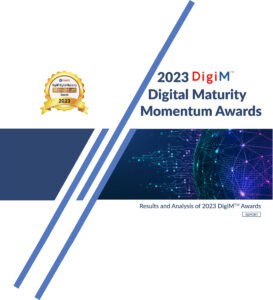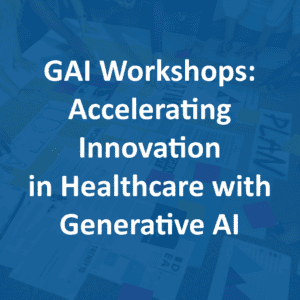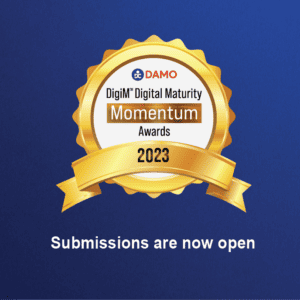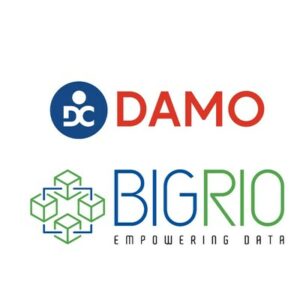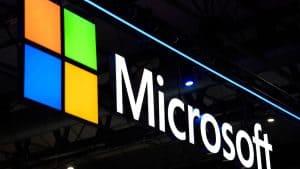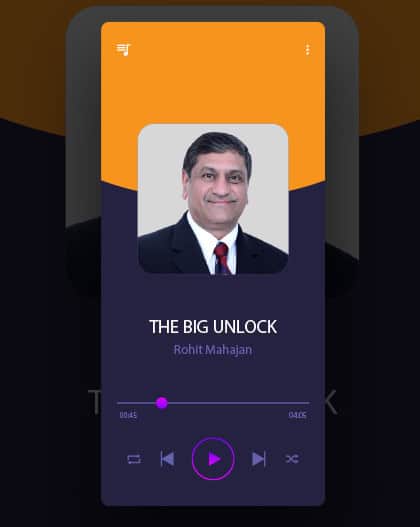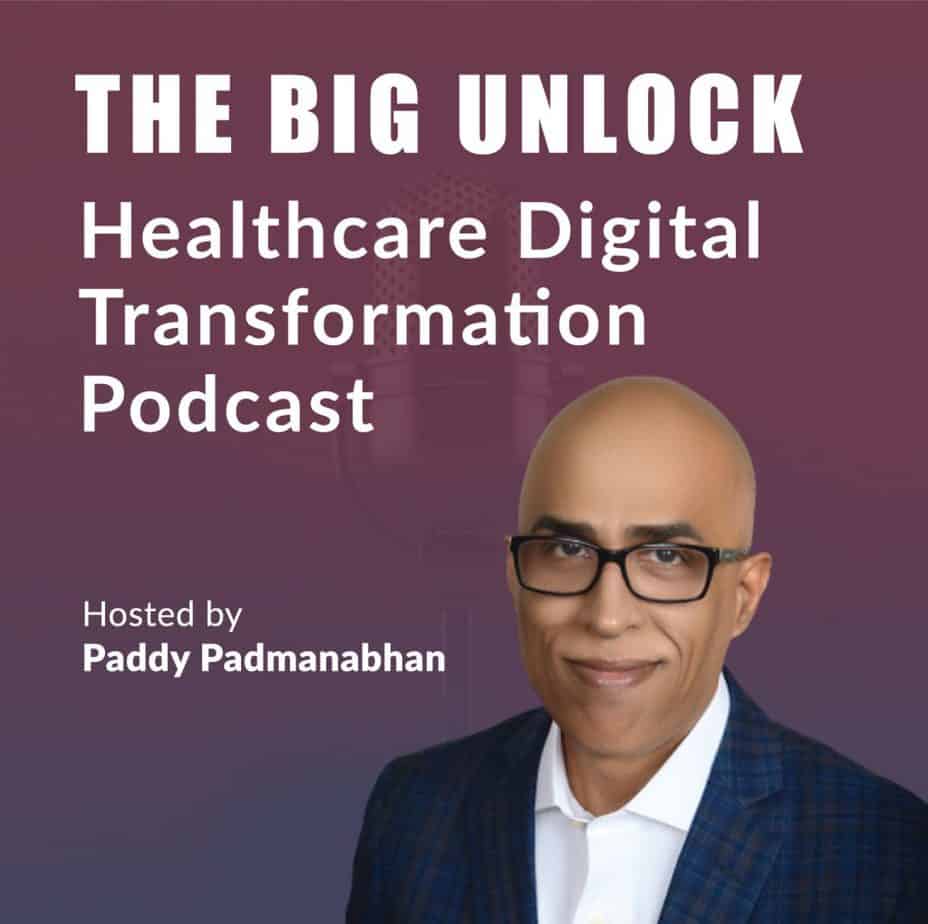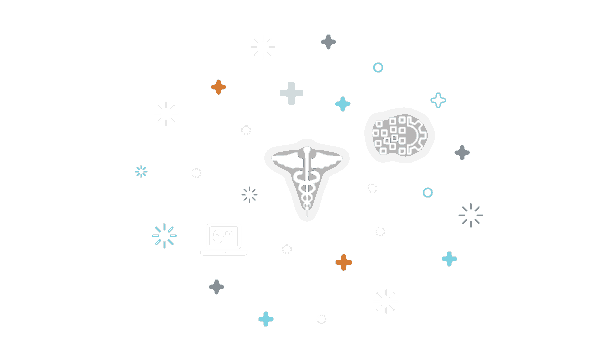This year looks to be one of adventure and excitement for healthcare technology, per usual, and according to a new report from HIMSS, 2019 Healthcare Trends Forecast: The Beginning of a Consumer-Driven Reformation, we’re about to get serious about the tangible results of digital health innovation. HIMSS’ forecast is meant to detail possible clinical and financial outcomes.
“Consumer pressure is driving a disruptive technology-enabled shift in healthcare today,” said Hal Wolf, HIMSS president and CEO, in a statement about the report. “Digital health technologies are beginning to deliver on their promise to help providers understand individual consumer preferences and provide personalized care that effectively coordinates care throughout the broader health ecosystem. By fully realizing the potential of information and technology, we can create an ever-increasingly informed and empowered global community of innovators, care providers, and patients.”
Specifically, the HIMSS report addresses four key trends: digital health implications and applications, consumer impact, financial and demographic challenges, and issues of data governance and policy. “Digital health tools have been riding the peak of the hype cycle for several years now,” the report points out, “but 2019 will be the year that digital health will need to answer for the way technology will increase access to care and narrow gaps in care and coverage.”
Given these areas of focus, it’s a good bet that the upcoming HIMSS19 conference and trade show will heavily promote these ideals. Even with that, there are likely going to be many other takeaways from healthcare technology’s biggest annual event so we asked some industry insiders, experts and thought leaders what they hope become the main takeaways from the event once it has wrapped. Here’s what they said.
Dr. Geeta Nayyar, chief healthcare & innovation officer, Femwell Group Health and TopLine MD
This is the year for meaningful change in patient engagement. The variables are finally aligned to support a significant shift in adoption and I think HIMSS19 conversations will reflect this. Incentives are forcing the alignment of quality and outcomes with the financial health of providers. Add in changes in behavior, technology and consumer expectations and we should see patient engagement move toward mass adoption. The alignment of value-based care incentives and the deployment of smart patient engagement solutions will become more mainstream. As a result, organizations that complete implementations will see improvements in the overall health of their patient populations.
Josh Schoeller, senior vice president and general manager, LexisNexis Risk Solutions Health Care
Cybersecurity remains a top hospital technology and data priority in 2019. I hope conversations at HIMSS19 will shift the cybersecurity issue from a predominantly HIT department’s function to the organization-wide responsibility based on greater awareness and understanding. Providers increase tech-based care delivery via patient portals, medical apps, including telehealth, and remote patient monitoring. As digital-based healthcare options grow, so do data breaches and medical identity fraud, and we have to balance providing data access with data privacy. Technologies are here to help, but for them to make a real impact, leaders need to foster a culture of cybersecurity.
Gregory Makoul PhD, MS, founder and CEO, PatientWisdom, Inc.
Empathy for users of health IT – patients, clinicians, and those who support them – is the key to developing and implementing sustainable innovations. This requires truly user-centered design and the recognition that ideals like patient-centered care may sound simple, but can be very hard to achieve in the real-world. Solutions need to be easy. And they must clearly address the problems that users are trying to solve
Wesley Madden, BSN, RN, vice president connectivity, NantHealth
Health IT leaders are exploring how technology can speed up the data available to clinicians in order to help them make more informed decisions, from cancer care to dialysis and much more. At HIMSS, attendees will benefit from demonstrations/use cases that illustrate successful interoperability, neutrality, and ease of implementation that may ultimately help their organizations improve care delivery and clinician satisfaction.
Todd Crosslin, vice president of healthcare strategy, Snowflake Computing
One of the most pressing issues facing healthcare organizations has long been how to store mountains of data. This year at HIMSS, the focus is shifting to how we can share data and rapidly generate real-world evidence to uncover critical healthcare insights. Modern data sharing is disrupting the traditional model of how people store and access healthcare data from multiple sources. Data must be connected from all available sources and combined with streamlined analytics and consolidated storage to deliver the frictionless, real-time healthcare insights that will advance the collective understanding of human health.
Vidya Murthy, vice president of operations, MedCrypt
The current CMS administration has placed an emphasis on listening to end consumers and bringing transparency to healthcare, with many anticipating that price transparency will allow for a transition to value-based care. A recent statistic states 60 percent of costs in healthcare are attributed to people – confirming technology could be an impactful lever in industry costs. As much as social determinants are the current buzzword amongst providers, I hope HIMSS will help identify the information and technology-driven conditions that assist in transitioning IT from transactional support to relational support for patients.”
Kaveh Safavi, M.D., J.D., head of global health practice, Accenture
Younger generations are increasingly unsatisfied with the conventional aspects of healthcare. As they become the largest living generation and hold the most power to influence future healthcare models, millennials are looking to take healthcare into their own hands and are actively paving the way for the growth of non-traditional care models, such as retail clinics and virtual and digital services. For example, recent Accenture research has found that one-third of millennials and almost half of Gen Z’ers say they don’t have a primary care physician, compared with just 16 percent of baby boomers. Providers and payers must aim to stay one step ahead of these shifts – offering strong digital capabilities and meaningful choices that provide services on patients’ terms – if they are to earn loyalty and fulfill the needs of all generational groups.
Pete Walker, CTO of global healthcare communications network, Publicis Health
Two things that I’m hoping to see elevated at HIMSS are the maturation of a partnership-focused culture in healthcare technology, and the rapid adoption of proven “consumer-grade” technologies to improve patient experiences. Healthcare is too big, complex, emotional and expensive for any one company to go it alone, and so everyone from existing pharma and platform leaders to non-health companies breaking into the space can benefit from a cultural shift towards increased collaboration. The latter suggestion reflects a trend towards integrating the type of personalized, AI- and data-driven engagement that already exists in other industries into healthcare.
Christopher K. Lee, MPH, CPHQ, clinical solutions marketing manager, Family Health Centers of San Diego
I’m looking forward to hearing about dealing with consolidation in our industry. Every week we hear of high-profile mergers and acquisitions — large players seeking vertical integration to control the provider, payer, and lately supplier side as well. Smaller organizations have been forced to align with these large players (strategically, technologically, etc.) or react in ways that may not be in their best interests or in the interests of their patients. So I’m interested to hear what HIMSS19 speakers have to say about this issue.
May Wang, co-founder and CTO, Zingbox
HIMSS message to the hospital/healthcare community is clear: cyber-attacks are both real and preventable. The risk is no longer limited to patient data and privacy, its patient lives that are at stake. We must secure medical devices as they are the biggest threat to the overall security of hospital operations. In fact, securing the entire IoT environment can prevent a single infected connected device from spreading that infection across the network.US Department of Health & Human Services convened a task group on cybersecurity and recently released guidelines for protecting health systems from cybercrime. It’s time for healthcare IT executives to take this issue seriously.
Jeff Zucker, CEO, ADVault, Inc. and MyDirectives
I hope there’s a strong focus on digital advance care planning as an empowering way to give consumers confidence they can have a voice in their care 24/7, anywhere in the world while helping payers and providers honor the industry’s shift to a values-based world. In short, we can’t truly be a person-centered healthcare system in a values-based world if we don’t know what people value!
Chris Edwards, CMO, Conversa Health
The desired single takeaway is proof the Patient has moved from a passive role in healthcare to an active participant in her health. Electronic health record companies, patient engagement companies, community population health companies should all be showing solutions that drive towards this critical, core transformation.
Paddy Padmanabhan, CEO of Damo Consulting and HIMSS19 Speaker
I expect plenty of discussion around digital transformation as healthcare shifts towards improved patient engagement and caregiver enablement. The use of data, interoperability issues, and advanced analytics tools including AI will get a lot of attention as well. The ongoing structural shifts in the industry, including M & A activity and the emergence of non-traditional players such as Amazon, Apple, and Google will be interesting topics of discussion.
Niko Skievaski, co-founder and president, Redox
The lack of interoperability costs the healthcare industry billions of dollars a year. More importantly, it contributes to the lack of patient engagement and threatens patient safety. Physicians are getting burnt out over their data entry responsibilities. Clearly, there needs to be a sense of urgency to make healthcare data useful. Healthcare organizations need to take steps to enable an interoperable infrastructure. Providers need to attempt to adopt the technologies that will make them most efficient and push back against the ones that don’t. And patients (all of us) should demand from our providers the same modern technology experiences we’ve come to expect in every other industry.
Nicole Latimer, CEO, StayWell
Industry research shows that health literacy is directly tied to health outcomes. However, up to $73 billion is spent each year on unnecessary healthcare expenses because patients don’t fully comprehend what their medical providers say to them. At HIMSS 2019, I hope providers walk away with a clear understanding of how FHIR technology can help them instantly access and share the most up-to-date, personalized health and wellness information — from printable handouts to videos and other digital content — in an easy-to-understand format.
David Niewolny, director of market development – healthcare, Real-Time Innovations (RTI)
2019 will be the year of the platform. Payers, providers, EHR and device vendors will realize the benefits of a platform strategy vs. a product strategy (i.e. ecosystems – Apple/Android vs. phones –Blackberry/iPhone). The availability of standards-based, medical-grade technology will drive adoption of this mentality. It provides a foundation for organizations to build the ecosystems that are necessary to drive widespread adoption. This platform-based approach has transformed industries and at HIMSS19 I believe we’ll see technology that will allow the Healthcare market to fully embrace the platform, and develop solutions that will improve patient outcomes while lowering costs.
Bill Kotraba, vice president healthcare solutions and strategy, Information Builders
With healthcare undergoing multiple large transformations at once – digitalization, consumerization and changing payment and care delivery models – my hope is that a common thread is recognized across these shifting forces. Specifically, data will be recognized as the foundation for all these changes over the next decade plus. This represents an opportunity for healthcare organizations to move towards an enterprise strategy and unified approach to data management versus the silos healthcare so often finds itself in. By focusing on the bigger picture of enterprise data, healthcare can avoid the shiny object syndrome and over hyped buzz words that are often produced at HIMSS.
Michael Morgan, CEO, Updox
At HIMSS, we hope health systems, physicians and other out-of-hospital providers take a look at new and different ways to engage patients as consumers. Digital tools, such as video, secure text, reminders and campaign messaging, have changed the game for how businesses connect with consumers. By taking advantage of our growing reliance on mobile communication tools – and technology that is changing how they are used – healthcare has a great opportunity to redefine engagement and connect with consumers in ways that get them involved in their care, while making providers and staff happier as well.
Barbara Casey, Director of U.S. Healthcare, Cisco
I hope the number one takeaway from the conference is the understanding that unlocking the power of data will help move patient critical data securely to the edge at the exact time, place and person wherever it is needed, transforming healthcare experiences for patients, clinicians and administrators. Retail experiences and healthcare expectations are blending together. Patients expect their healthcare provider to use technology to save them time, add convenience and better outcomes. Another takeaway is how clinicians are asked to do more every day in less time and are desperately seeking the tools they need to deliver care efficiently at the bedside or automate inefficient and redundant tasks. With clinical mobility and improved collaboration, clinicians will be able to streamline care management and care-team communication, expand telehealth services, and save time and money finding medical equipment.
Mudit Garg, founder and CEO, Qventus
We hope the number one takeaway from HIMSS this year is that AI is ready for implementation. In years past, the discourse on AI in healthcare has been centered around its promise and potential — but the technology is now sophisticated enough to make meaningful improvements on patient care and reliability of operations in healthcare. We know AI can significantly improve the reliability of operations in healthcare, and it can enable staff to do their jobs without cumbersome processes slowing them down. Healthcare teams have always tackled operational challenges through performance improvement initiatives, redesigned workflows, and training – but AI has the potential to change all of that.
Adam Mahmud, healthcare lead, Jamf
With more than 300 education sessions across 24 topics – including connected health, cybersecurity, data analytics, innovation, interoperability, population health, precision medicine and more – HIMSS 2019 will have something for everyone. One key trend to watch is consumerization of health. Healthcare consumers (read: patients) want faster, more personalized care, and benchmark off the digital experiences in their personal life. For example: remote monitoring isn’t a new concept. Apple’s FaceTime has set a new standard for how two people can communicate, and many virtual care offerings exist that deliver a similar experience. With thousands of vendors showing off their latest and great products and services this year, it’s easy to see how an attendee can feel overwhelmed. I hope another key takeaway is that healthcare organizations aren’t in it alone, and with the right partners and alleys, they can charge forward in their quest transform the lives of patients.
Gurpreet Singh, partner and US health services sector leader, PwC
The theme will be “don’t go it alone.” The central goal will be focused around the patient as a consumer, and partnerships will be key to achieve success. I’m looking forward to the non-traditional collaboration and partnerships across payers, providers, pharma and new entrants. What we will see is emblematic of the new health economy, and the “gold rush” around patient experience, data, digital therapeutics. The outcomes will hopefully leave us with the winner … the consumer.
Deirdre Ruttle, vice president of strategy, InstaMed
Consumer responsibility continues to increase for premiums and medical bills while at the same time, only nine percent of consumers can define the four key terms around payment responsibility. I hope we hear a call by industry leadership at HIMSS to take real action when it comes to delivering healthcare payment experiences that are on par with the best retail experiences. Healthcare needs payment experiences that are convenient, offer multiple payment options, and meet the highest standards for security. Until then, the industry will lag behind as retail giants continue to enter healthcare with the goal of being consumer-centric.
Tom Skelton, CEO, Surescripts
HIMSS is a chance for us to assess progress, engage with other leaders and chart a path forward. As patients, we have an increasingly consumer-oriented mindset, and there’s no question that this consumerism is sparking change across healthcare. As an industry, we can address this change by leveraging available technology, including prescription price transparency and interoperability solutions to achieve the goals of value-based care and deliver the seamless healthcare experience that patients expect, and deserve.
Don Woodlock, vice president of HealthShare, InterSystems
Now that medical records are digitized and we have all this information in one location, suddenly we shift from having no information to having way too much in a very cluttered desktop. Unfortunately, much of it is irrelevant. Artificial intelligence and machine learning have the ability to cut through the clutter and bring what is most relevant to the forefront for the physician. AI and machine learning also have the ability to identify patient risks (readmissions, diabetes, and even suicide). If physicians can predict these kinds of events, we can customize patient visits and change the provider-patient dialogue and treatments. At HIMSS this year, I’m hoping to see more automation that makes the practice of medicine easier, without adding more irrelevant information to sort through.
Paul Brient, CEO, PatientKeeper, Inc.
I’d like to hear the health IT industry acknowledge that we have yet to actually help physicians, and commit to doing so. In first-generation EHR systems, the industry took various ideas about how to improve medicine and workflows for the physician, and we imposed those adjustments on them. Everyone had their own views about how a doctor should work, but the one person we didn’t consult was the doctor. We added technology and reduced the productivity of healthcare’s most precious human resources. This is not the way it was supposed to work.
Marc Probst, chief information officer and vice president, Intermountain Healthcare
That we are all in this together; vendors, payers, providers, home health, outsourcers, tech companies, data/analytics professionals, consumer tools, etc. AND that we all HAVE to be in this together and figure out how systems and data can interoperate to appropriately service the healthcare needs of society. Right now there is too much money going to BSOs (Bright Shiny Objects) and not enough attention to the foundational interoperability and standards for our industry. We risk making all the same mistakes of Meaningful Use again, just at a bigger scale with even greater loss.
Jeff Livingstone, vice president of global life sciences and healthcare, Unisys
Healthcare IT cannot persist in vacuo. It needs to become better at meeting broader market demands by adopting comparable solutions from other, more technically mature industries. In addition, HIT needs to do more to support standard processes and frameworks (e.g., in the areas of security and privacy) across different healthcare segments. The escalating rise of patient consumerism is very real and represents a fundamental and seismic change to our centuries-old medical establishment. It remains vital upon HIT to create and adopt an “inside-out” service mindset, starting from the perspective of the healthcare end consumer (as opposed to ending with it).
Ken Perez, vice president of healthcare policy, Omnicell
Coming out of HIMSS19, we expect to see growing interest in autonomous solutions that allow healthcare providers to move away from manual, inefficient and/or administrative tasks into higher-value and more patient-centered activities. This aligns with the inexorable shift to value-based care that hospitals and health systems have been experiencing for years. These solutions will need to employ secure cloud-based data platforms, allowing information to be shared and analyzed across more and more of the care continuum. The combination of this data infrastructure and automation will produce actionable intelligence that improves operational, financial and clinical outcomes.

